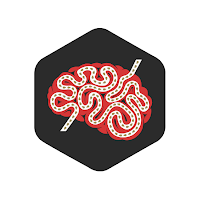A couple of us from TBH Creative were among the nerds geeking out about how to make the web better, and this is our first recap of the some of the best tidbits were learned during those jam-packed three days of networking, creative inspiration, and tech talk.


Be mobile-minded
If there was one universal touch-point for each presentation, it was mobile-mobile-mobile! Everyone from former New York Times design director Khoi Vinh to Couch to 5K creator Josh Clark to user experience guru Sophie Kleber talked about the importance of designing experiences for the instant era where the “web is a beautiful, big, messy place.”
Noteworthy numbers—
- 91%: The percentage of Americans own a cell phone (versus 76%, the percentage who own a computer)
- 5 feet: The furthest distance most smart phone users are ever from their device
- 58 minutes: The average amount of time smart phone users spend on their device everyday
- 17%: The percentage of all traffic worldwide from mobile devices
- 40%: The percentage of time spend on the web using mobile devices
Sound advice—
- “Device is context.”
- “Pushing mobile frontier means designing for sensors and a network of social devices.”
- “Websites should be responsive. Don’t bump them off to an app unless there’s a value to the app. Some apps may still be appropriate but when it comes to mobile, most of the time they’re still basically like an extra pinky toe.”
- “If people get to your site by search on their mobile device, make sure it will work when they get there.”
- “Phones are personal items. Tablets are hearth fires.”
- “Performance is the most important thing when it comes to responsive design.”
- “Responsive design isn’t a fad. It’s just design and design is fundamentally commercial.”
- “The best apps are kings of pain. The more specifically you define your user, customer, or use case, the better your design will be. Sometime that’s for everyone is for no one. Going narrow makes your job easier: easier to find customers, easier to know what features to include, and easier to understand the competition.”
- “The best touch interface is sometimes no touch at all.”
- “Design for different barriors to action, no matter if the platform is a phone, tablet, or desktop. Just because a user can doesn’t mean they will.”
- “Responsive is not a line item. It is design.”
 The business of making stuff
The business of making stuff
Successful web developers and designers are also successful business people. They get proactive problem solving and understand small wins matter. A lot of the FOWD speakers shared tidbits for maximizing successes on the job that ring true no matter what you do for a living.
Sound advice—
- “When problem framing, ask why! Keep asking why until you get to the root cause of why a stakeholder or client is stuck on a position. Once you get there, then ask: ‘What’s stopping you?'”
- “Doing stuff and doing stuff the ‘long hard stupid way’ is the only way of doing things that are good. But when it doesn’t matter, get a move on!”
- “Mistakes and errors are just part of the learning process. It’s not about the programming. It’s about the mindset, taking risks and helping each other.”
- “If you build it, they won’t necessarily come right away. There’s no such thing as an overnight success. The things you set out to build at the beginning are rarely what you have in the end. It often takes many failures to get results. The secret? Persistence.”
- “‘I’m trying’ is a damn better answer than ‘Because I didn’t have to.'”
- “Establish business goals upfront then ask the clients if the design helps achieve the goals, not if the clients ‘like’ the design.”
- “Freedom is overrated. Deadlines and guidelines help.”
- “If you’re not embarrassed by the first version of your product, you launched too late. Change is okay. Tools evolve. You have to prioritize. Change requires more than a five minute investment to try and adapt. Just because a tool doesn’t solve your every need doesn’t mean it can’t help.”

Design responsibly
From web accessibility issues to psychology for designers, FOWD speakers had a lot of recommendations for how designers and developers can reduce everyday frustrations for users and create better websites.
Sound advice—
- “Every user is a non-javascript user while the page is loading.”
- “Consider performance an element of design. Keep in mind that most users will leave a website if it takes longer than five seconds to load.”
- “Be future friendly and prepare for the unknown by being backwards compatible and enhancing upwards. When evaluating new technologies, always filter through the lens of the long web.”
- “With the way that users behave nowadays, we can no longer make users jump through hoops. Don’t make users click unnecessarily. A click becomes a commitment, whereas scrolling requires very little commitment. Design should not stand in the way an app or website works.”
- “A designer who doesn’t understand psychology is going to be no more successful than an architect who doesn’t understand physics.”
- “Design a sign-up form like a conversation.”
- “It’s not what we don’t know that will kill us. It’s what we fully ignore. Don’t seek the truth. Just drop your opinions. For a web design to be successful, it must communicate.”
- “No safe universal colors exist, but effective use of contrast helps increase legibility with contrast between light and dark colors being the most important. Complimentary color pairs work better than adjacent colors. The easiest trick for checking contrast is to work in grayscale.”
- “The first rule of ux is that you cannot NOT communicate. You have to care. Think about your product as a series of interactions that cause stress or pleasure.”
- “Bundle content by units of meaning. Cluster topics within tags to tell stories. To make archives more relevant is to be increasingly relevant on the platforms where people already are. Our stories are data with a soul.”
If you follow the #fowd hashtag, you can see more from this event and their upcoming conference in London. Next up: A summary of some of the best apps and websites recommended by FOWD speakers.
Thinking about updating your business’s web strategy? TBH Creative has an experienced team that can help you figure out how to get started to meet your strategic needs. Contact us today to get started.
 The business of making stuff
The business of making stuff
